April 30, 2019: DJ, Who Began ‘Paul is Dead’ Rumors, Dies
by Best Classic Bands Staff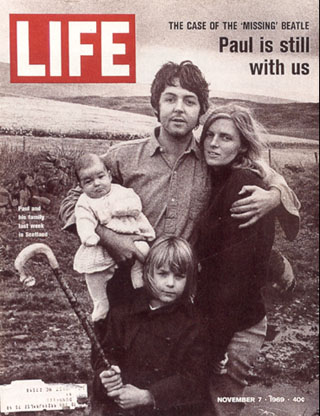
The November 7, 1969 issue of Life proclaimed McCartney was alive and well
Russ Gibb, the Detroit disc jockey who fueled a rumor in 1969 that had begun weeks earlier that Paul McCartney was dead, died April 30, 2019. The longtime local music legend was 87 and living at a rehab center in nearby Dearborn Heights, Mich. His death was reported by the Detroit Free Press.
On October 12, 1969, while on-air at WKNR-FM in Detroit, Gibb took a call from a listener who told him that in “Revolution 9,” a voice says, “Turn me on, dead man.” And it’s a sign that Paul McCartney is dead. Gibb played the song as instructed and his listener phone line lit up with more callers offering clues that indicate that Macca “blew his mind out in a car” accident a few years earlier and was replaced by a lookalike to spare Beatles fans the grief of losing their hero.
The rumors had started with a September 17 article in the college paper at Drake University in Iowa that explored whether McCartney was dead and mentioned the backwards-masked voice on “Strawberry Fields…” and other clues. Two days after Gibbs’ broadcast, a University of Michigan student published a satirical review of Abbey Road that details the clues to McCartney’s demise on the album, a number of which he simply made up. Soon after, they were being picked up by wire services and printed in newspapers across America. On October 19, WKNR devoted a two-hour show to the mystery.
Eventually hundreds of “clues” were “discovered” by fans. The armband Paul wears on the cover of Sgt. Pepper’s supposedly reads “OPD” for “officially pronounced dead” (though it actually reads “OPP” for Ontario Provincial Police and was given to McCartney while on tour in Canada)– just one of the many hints of Paul’s death people read into that cover.
Similarly, the four Beatles striding across the street on Abbey Road represent an undertaker (Ringo in black), gravedigger (George in denim), minister (John in white) and corpse (Paul barefoot and out of step with the others). The license plate of the Volkswagen in the background reads “28 IF,” meaning McCartney would have been age 28 if he’d lived (though he was only 27 at the time).
Related: Those ‘Paul is Dead’ rumors
[A book, Wings: The Story of a Band on the Run, with McCartney listed as its author, and edited by the prize-winning historian Ted Widmer, arrives on November 4, 2025. It’s available for pre-order in the U.S. here and in the U.K. here.]
Gibb ultimately became a significant figure and visionary on the Detroit rock scene. He operated the city’s Grande Ballroom and introduced such area acts as the MC5, Iggy Pop and Alice Cooper to audiences. MC5 guitarist Wayne Kramer paid his respects.
My dear old friend Russ Gibb has departed this earth. He will be sorely missed. He was one of a kind. w.
— Wayne Kramer (@waynekramer) May 1, 2019
The venue was the first to present The Who’s rock opera Tommy in the U.S.
- That Haunting Female Vocal On ‘Gimme Shelter’ - 12/25/2025
- Musician Deaths of 2025 - 12/24/2025
- Radio Hits of December 1970: It’s a Miracle - 12/23/2025

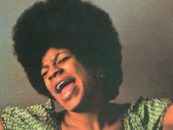
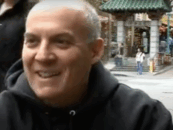
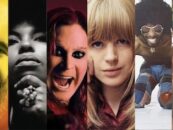
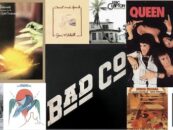

11 Comments so far
Jump into a conversationI suppose I will have to start looking for clues now as I don’t believe this!
bbiG ssuR! Play that backwards and see what it Really says.
Russ Gibb was also a very instrumental part of the Detroit Rock scene. It was he, as much as the musicians themselves that made Detroit a hotbed for all the greatest Rock bands of the Ara to play Detroit, he gave them a place to play, The Grande was much more than a music Hall, it was a mecca for the counterculture to thrive in. Going to the Grande was like going to church, and listening to the best rock and roll of the day. Every week someone different, Traffic, The Who, Led Zeppelin, Janis Joplin, , Johnny Winter, and that was just the first month of operation.
He was also a High School teacher who taught Audio Visual to a Hugh number of kids who went into that medium.
He will be missed, old uncle Russ, as he was known to all of us here in Detroit, was a man who understood the youth of the day.
John says ‘I buried Paul’ in Strawberry Fields…
Both John and George Martin always said it was “Cranberry sauce,” but the “I buried Paul” rumor was a hot one for awhile.
Paul McCartney never died he always lived.
Russ was an encourager of young people. I waltzed into his Grande Ballroom office during a summer ’68 Spirit concert and walked out with an assignment to create a B.B. King concert postcard. Over the years that card has taken on a life of its own. It’s periodically is on display at Cleveland’s Rock’N’ Roll Museum, and is the only such work to get a prominent fly-by in the Grande documentary, “Louder Than Love.” Because of that one-off artwork, my name appears in Leo Early’s book about the Grande, as well as in volumes by then-regular artist Carl Lundren (he having provided some initial guidance and access to his swipe file).
By happenstance in 1970, I found myself on the film crew for the Goose Lake International Pop Festival in Michigan, which was co-promoted by “Uncle” Russ.
As an aside, he learned about the forthcoming arrival of CATV while a house guest of Mick Jagger’s. So educated, he returned to Dearborn and acquired the city’s CATV licensing rights for $5K. The city council thought he was nuts. A few years later, he sold his rights, pocketing a seven-figure fee. Not bad for a school teacher and former sock hop promoter.
Incidentally, it was none other than the Fillmore’s Bill Graham who taught Russ the ins and outs of running a psychedelic ballroom. Interestingly, the big money came from the concession stand.
I believed Paul was dead after hearing the pop garbage he put out after the Beatles broke up. John was the hard edge of the Beatles, after that Paul indeed was A Man On The Run.
You may not like the music Paul produced in his post-Beatle days, but at least it can be said that he remained a professional musician, who created polished recordings, as he went through varying phases in his life. Even in the Beatles, he was always responsible for the very important pop element that gave them much of their mass accessibility. While Lennon certainly can be credited as being the edgier of the two, in my opinion he, more or less, did a slow melt down that wasn’t much worse (from a Beatles perspective) than Paul’s music, except that Paul’s was consistently constructed better sonically. Neither guy individually reached anywhere near the heights that they reached together, or even individually, as Beatles, when they all contributed to each other’s music. You’re bound to find folks who love Mac’s solo stuff and some who love Lennon’s, mainly because they identify with his personality. But in reality, only George Harrison really blossomed on his own beyond the Beatles. And even that incredible wellspring of creativity didn’t last very long. I don’t think anyone can argue that, in the case of the Beatles, the sum was greater than the parts.
I think John was still recovering from the Beatles when he was gunned down. The 1980s and 1990s may have brought some great records.
Bruce Spizer has a hilarious recount of “Paul is Dead” in one of his excellent books.
Anybody can say what they want. I’ve NEVER heard anything but “I buried Paul” at the end of Strawberry Fields. No cranberry sauce or chocolate chip cookies.
“Eye . . . berried . . . Paaauuulllllll”.